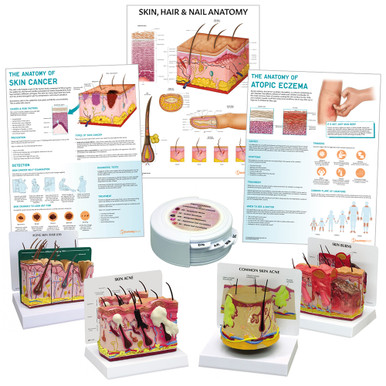Written by: Liz Paton, MSc
Hair Anatomy Overview
In humans, hair helps with heat regulation and protection from the sun. The hair on some areas of the body serves a special purpose, such as our eyebrows and eyelashes which prevent sweat, dirt and debris from entering our eyes. Our hair also has a psychological role in providing us with an identity and provides us with a way of expressing ourselves.
Anatomy of Hair
Hair is made from a protein called keratin which is the same protein found in our nails. Protruding from our skin, hair consists of two main parts: the follicle and the hair shaft.
Hair follicles are mini organs which anchor hair into the skin. The base of a hair follicle is called the hair bulb which grows to form a hair shaft. The hair bulb contains cells called a follicular matrix and a dermal papilla which work together to grow hair. Capillaries (blood vessels) surround these cells which help with the structure and growth of the hair. Cells called melanocytes are mixed within the matrix of cells which provide hair colour.
The hair shaft has three layers: the medulla is the core of the hair, which is only seen in the thick, large hairs. Next, there is the cortex which gives strength, texture and colour to the hair strand. Finally, the cuticle is thin and colourless, and is the outer layer of the hair.
Hair Growth
Hair growth rates vary from person to person, but an average growth rate is about 2.5 cm a month, and depending on where it is on the body, can last for several months or even years.
Hair growth goes through a cycle. The growth stage is known as anagen, during this phase cells divide at a rapid rate. The catagen or transitional phase means that the hair growth is slowing down, hair attaches to the skin as it detaches from the hair follicles which start to shrink. During the telegenic or resting phase, the hair growth stops, the old hair is detached from the follicle and falls out. A new hair will begin growing, which helps to push the old hair away.















